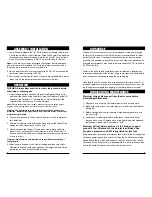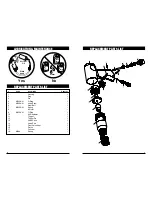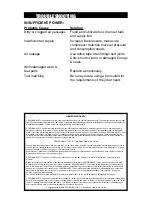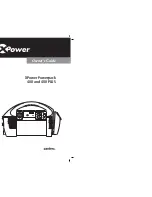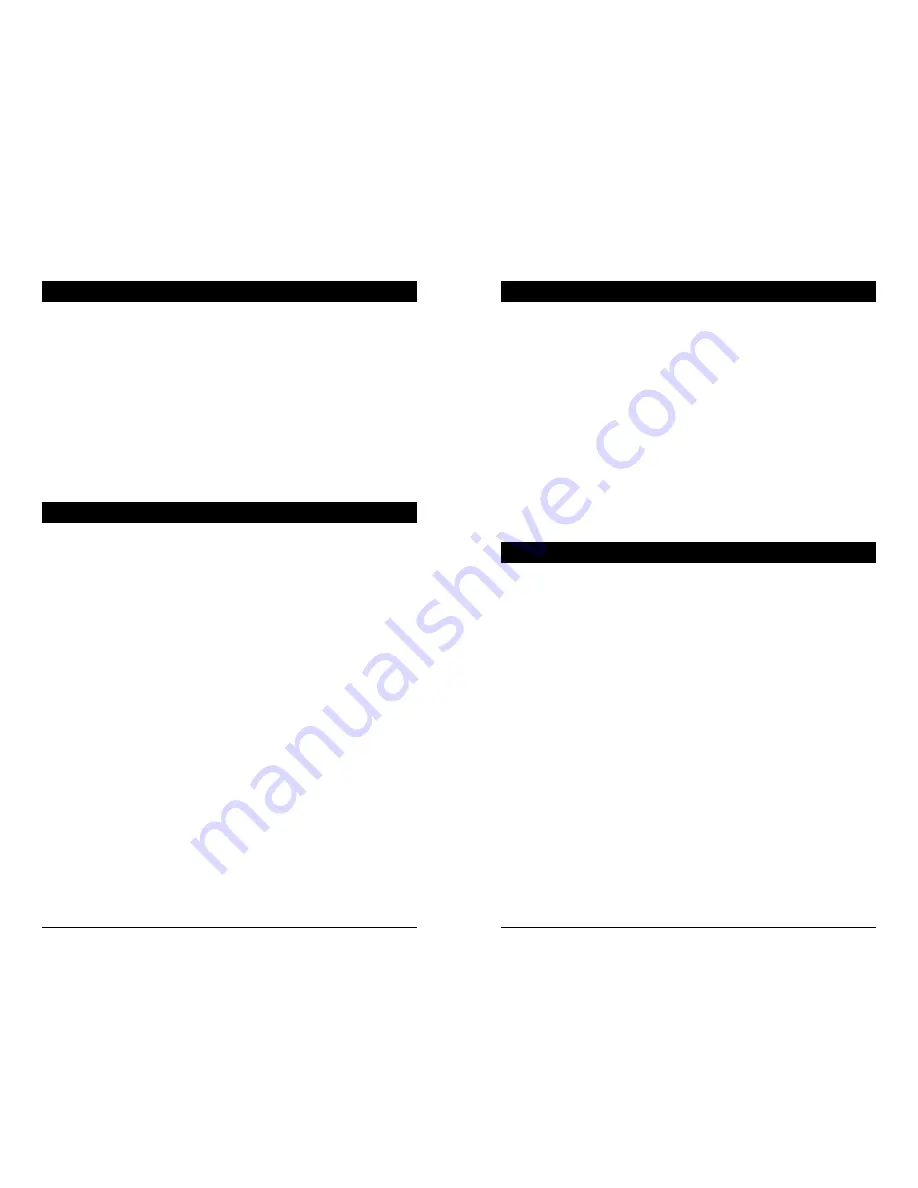
4
5
ASSEMBLY / INSTALLATION
Clean air of correct air pressure is recommended for the power supply
for this tool. A maximum of 90 PSI at the tool is recommended for most
air tools of this class. Check specifications section for recommended
pressure. (Depending on length of air hose and other circumstances, air
pressure at compressor may need to be increased to 100 PSI to ensure
90 PSI at the tool.)
Water in the air hose and compressor tank contributes to reduced per-
formance and damage of the air tool. Drain the air tank and filters before
each use and as necessary to keep the air supply dry.
Hose length over 25’ causes loss in line pressure. Increase hose I.D. or
increase compressor pressure to compensate for the pressure loss. Use
an in-line pressure regulator with gauge if air inlet pressure is critical.
AIR SOURCE
OPERATION
WARNING: Always disconnect the tool from the air source before
examining or changing bits.
1. Select the appropriate chisel/bit. Unscrew the Retainer Spring (18)
and insert the shank of the chisel/bit. Screw the Retainer Spring (18)
back onto the Cylinder (17). Holding the Air Chisel firmly, pull the
chisel/bit hard to make sure it locked into place.
Note:
Before connecting the air supply, make sure you are wearing safety
goggles and a full face mask, ear protection, and steel toe shoes.
Warning: Any spectators in the immediate area will need eye and ear
protection. Beware of flying chips of wood, concrete, metal, or any other
material being chiseled.
2. Connect the air hose to the Air Inlet (8) and turn on the compressor
(not included).
3. Grip the Air Hammer with both hands firmly and put the chisel/bit tip
up against the workpiece you wish to chip.
4. Gently squeeze the Trigger (11) and move slowly along the work-
piece. Do not push down on the Air Hammer; let it do the work. If it
does not do the intended job to satisfaction, examine your bit to see if
it is worn or dull.
Warning!: Always disconnect from the air source before examining or
changing bits.
5. When you are finished, turn off the air supply and then hold the Air
Hammer in a safe direction and Squeeze the trigger to bleed off the
remaining air. Then, disconnect the air hose.
1. You will need to prepare the 1/4" Quick-disconnect Coupler Plug to con-
nect to the air inlet on the Air Hammer. Wrap the Coupler Plug with pipe
thread seal tape before threading it into the Air Inlet (9). Connect the a
Quick-Disconnect coupler on a 3/8" ID Air Source Hose to the tool.
Note:
If you are not using an automatic oiler system, before operation,
add a few drops of Pneumatic Tool Oil to the airline connection. Add a
few drops more after each hour of continual use.
2. Set the air pressure on your compressor to 90 PSI. Do not exceed the
recommended air pressure of 90 PSI.
3. Check the air connection for leaks. Once you are satisfied there are no
leaks, turn off the air compressor and disconnect the tool.
ASSEMBLY / INSTALLATION
LUBRICATION & MAINTENANCE
Warning: Always disconnect from the air source before
attempting maintenance.
1. After each use, wipe the Air Hammer down with a lint free cloth.
2. Make sure there are no concrete chips, dirt, or debris in the Retainer
Spring (15).
3. Before storage, add a small quantity of high quality pneumatic oil in
the Air Inlet (8).
4. Examine your chisels/bits before using them. If a chisel is dull or
cracked do not use it. Replace worn or broken chisels with approved
replacement chisels from Performance Tool®.
Warning: Oil tool before each use. 4 to 5 drops of a good
grade Air Tool Oil placed in the air inlet is sufficient. Use
proper air pressure and CFM rating listed for this tool.
Drain water from hoses and compressor tank. Water in the air supply line
will cause gumming and loss of power. Clean the air filter on the supply
line and flush the tool with gum solvent or a 50/50 mix of air tool oil and
kerosene. It may be necessary to disassemble the tool to properly clean
and re-lubricate. Wipe down the unit with a lint free cloth.



